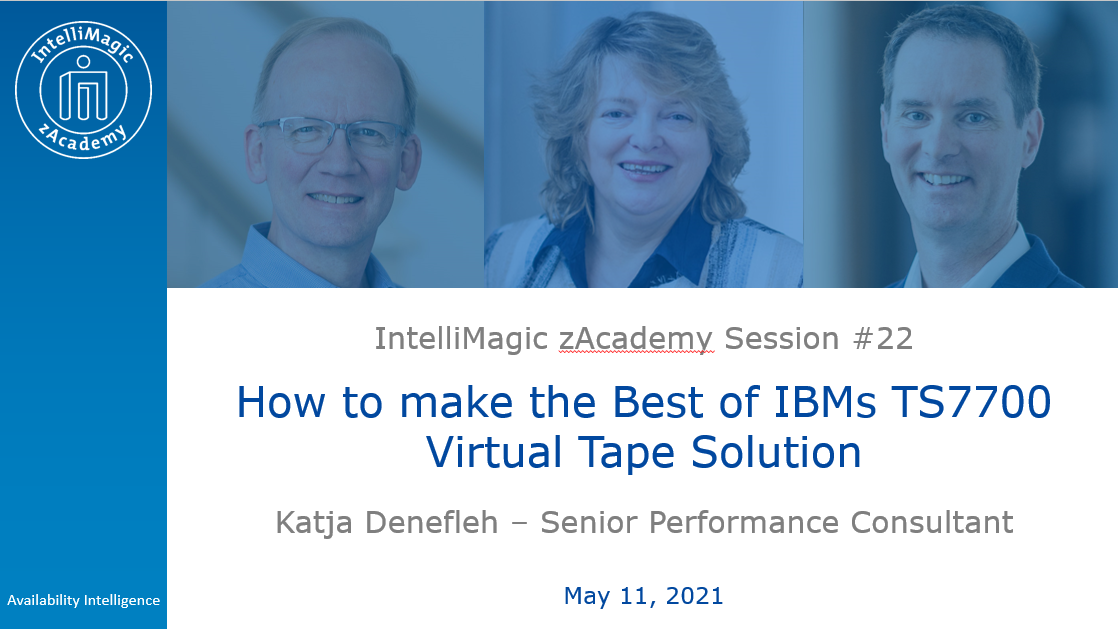Understanding your TS7700 environment is crucial to ensuring you get the most optimal performance out of it. As a follow-up to last year’s zAcademy virtual session on Cache Capacity, this Virtual Tape webinar will focus on Cache Bandwidth.
This webinar will help you better understand:
- What controls and features can be used to get the most out of your TS7700 environment
- Which areas and metrics you should be regularly monitoring
- Best practices for optimizing your TS7700 environment
- What to do if your TS7700 is attached to a physical tape library
If you’ve ever experienced frustrating performance issues on your TS7700 or just want to ensure your environment is optimized per best practices, join us to learn how to make the best of IBM’s Virtual Tape solution.
You May Also Be Interested In:
How to Find Sick But Not Dead (SBND) TS7700 Tape Clusters
Rather than waiting for a remote VTS to fail, you should be reviewing these key TS7700 reports to determine if remote clusters are receiving replication data or not.
Are My Remote Clusters Receiving Replication?
Review these key reports when troubleshooting remote cluster issues or trying to determine if your remote clusters are receiving replication.
TS7700 Synchronous Mode Copy Benefits
Compared to a reduced RPO, a lesser-known benefit to using Synchronous Mode is a more efficient cache flow and therefore a more efficient utilization of the disk cache.
